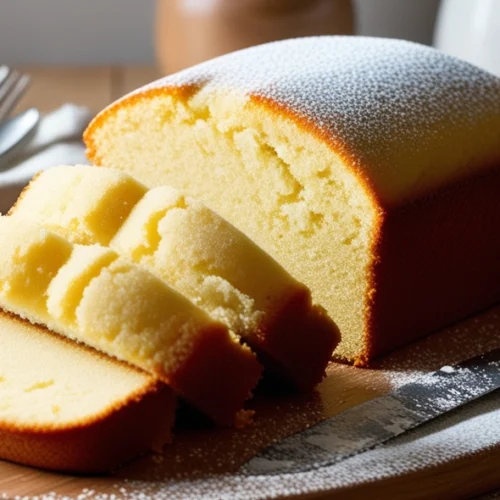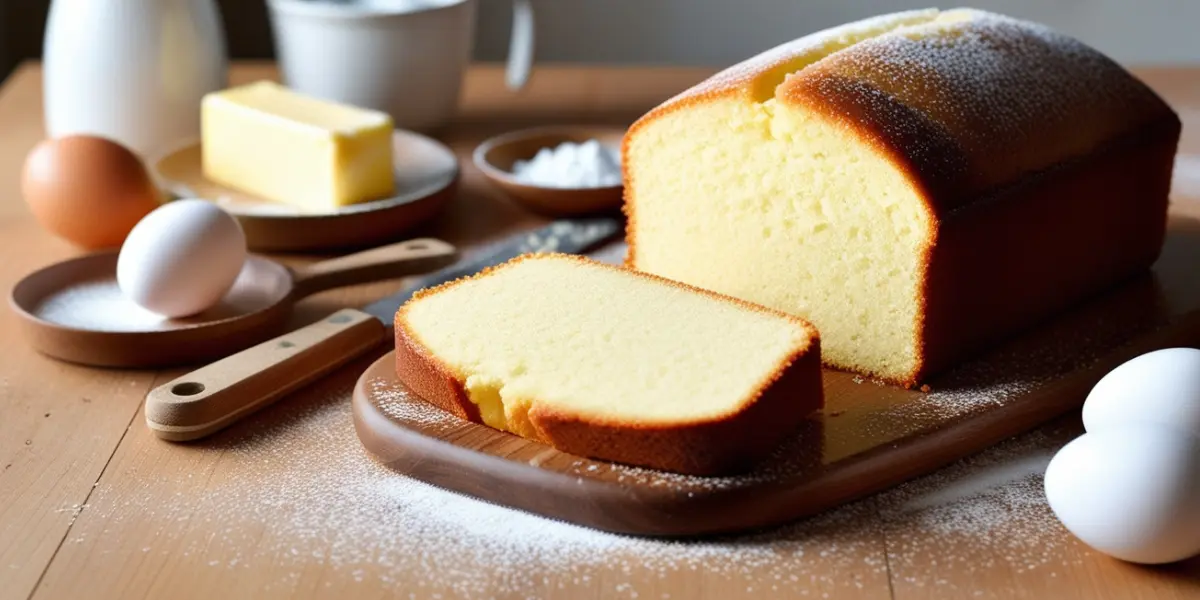Introduction
Imagine your kitchen filled with the comforting aroma of butter and sugar baking to golden perfection. Butter pound cake isn’t just a dessert; it’s a slice of tradition, a comforting treat that brings people together. Whether you’re baking it for a family gathering, a special occasion, or simply to satisfy a sweet craving, butter pound cake is a recipe worth mastering. In this guide, you’ll discover everything you need to know about making the perfect butter pound cake, from its rich history to step-by-step instructions and pro tips to elevate your baking.
Table of Contents
What Makes Butter Pound Cake So Special?
A History of classic cake
Pound cake has a storied history, originating in Europe during the early 18th century. Its name stems from the traditional recipe that used a pound each of butter, sugar, eggs, and flour. Over the years, variations emerged, incorporating different flavors and techniques to create the buttery delight we know today. Butter cake remains a cornerstone of baking, celebrated for its simplicity and rich, satisfying flavor.
Why Butter is the Star Ingredient
Butter is the heart and soul of pound cake recipe. Its creamy texture and unmistakable flavor create the perfect foundation for a tender crumb and golden crust. High-quality butter ensures your cake is rich, flavorful, and perfectly moist. When baking, choose unsalted butter for better control over the flavor and opt for room-temperature butter to achieve a smooth batter.
Rich Buttery Dessert – Step-by-Step Guide
Ingredients You’ll Need

Butter Pound Cake
Equipment
- Stand or hand mixer
- 9×5-inch loaf pan
- Mixing bowls, spatula, and whisk
Ingredients
- 1 cup Unsalted Butter (225g)
- 2 cups Granulated Sugar (400g)
- 4 Large Eggs
- 2 1/2 cups All-Purpose Flour (315g)
- 1 tsp Baking Powder
- 1/2 tsp Salt
- 2 tsp Vanilla Extract
- 1/2 cup Milk (120ml)
Instructions
- PreparationPreheat your oven to 350°F (175°C).Grease and flour a 9×5-inch loaf pan to prevent sticking.
- Creaming the Butter and SugarIn a large mixing bowl, beat the butter and sugar until the mixture becomes light and fluffy. This step incorporates air, ensuring your cake has a tender crumb.
- Adding EggsAdd the eggs one at a time, beating well after each addition. This helps the batter stay smooth and prevents it from curdling.
- Mixing Dry IngredientsIn a separate bowl, sift together the flour, baking powder, and salt.
- Blending Wet and Dry IngredientsGradually add the dry ingredients to the creamed mixture, alternating with milk. Begin and end with the dry ingredients to maintain the batter’s consistency.
- Adding FlavorStir in vanilla extract for a classic flavor. You can also experiment with almond extract or citrus zest for a twist.
- BakingPour the batter into the prepared pan and smooth the top with a spatula.Bake for 60–70 minutes, or until a toothpick inserted into the center comes out clean.
- Cooling and ServingAllow the cake to cool in the pan for 10 minutes before transferring it to a wire rack to cool completely. Slice and serve with your favorite accompaniments.
Tips and Tricks for the Perfect rich buttery dessert
Baking Like a Pro
- Room Temperature Ingredients: Ensure your butter, eggs, and milk are at room temperature for easier mixing and a smoother batter.
- Don’t Overmix: Overmixing can lead to a dense cake. Mix just until the ingredients are incorporated.
- Use a Kitchen Scale: For accurate measurements, especially for flour and sugar.
Creative Variations
- Lemon Butter Pound Cake: Add fresh lemon zest and a tablespoon of lemon juice for a bright, citrusy flavor.
- Chocolate Marble Pound Cake: Swirl melted chocolate into the batter before baking for a striking visual and rich chocolate taste.
- Vanilla Bean Pound Cake: Use the seeds from a fresh vanilla bean for an intense vanilla flavor.
How to Serve and Store Classic Cake
Serving Suggestions
- Serve warm slices with whipped cream and fresh berries for a delightful dessert.
- Pair with a scoop of vanilla ice cream for an indulgent treat.
- Toast leftover slices and spread with butter or jam for a quick snack.
Storing Butter Pound Cake
- Store the cake in an airtight container at room temperature for up to three days.
- For longer storage, wrap slices in plastic wrap and freeze for up to three months. Thaw at room temperature before serving.
Frequently Asked Questions (FAQs)
What is the secret to a moist pound cake recipe?
The secret lies in creaming the butter and sugar properly to incorporate air and using room-temperature ingredients for a smooth, consistent batter.
Can I use salted butter instead of unsalted?
Yes, but reduce the added salt in the recipe to maintain balance. Unsalted butter is preferred for better control over flavor.
How can I make my butter pound cake less dense?
Avoid overmixing the batter, as this can develop too much gluten, leading to a dense texture. Also, ensure your baking powder is fresh.
Can I add toppings or glazes?
Absolutely! A simple vanilla glaze, powdered sugar dusting, or fresh fruit can enhance the presentation and flavor of your cake.
Conclusion
Butter pound cake is a celebration of simplicity and rich flavor. With its golden crust and tender crumb, it’s a timeless dessert that never goes out of style. By following this guide, you’ll master the art of making a perfect butter pound cake that’s sure to delight your family and friends. So grab your apron, preheat that oven, and let’s bake a cake that’ll fill your home with warmth and joy. Happy baking!


